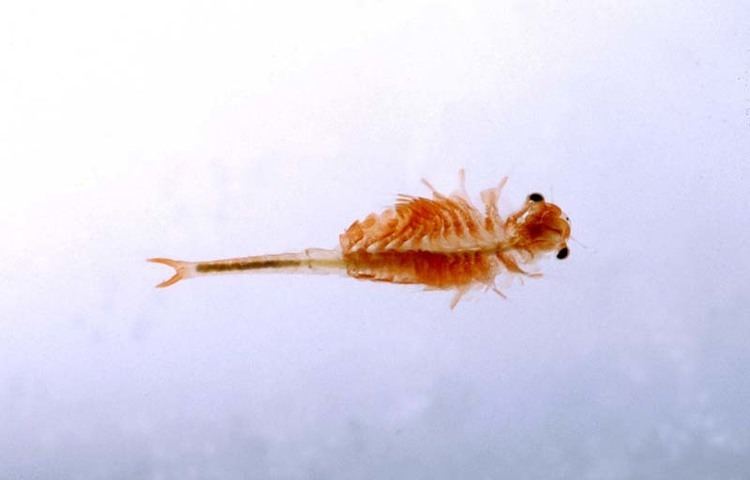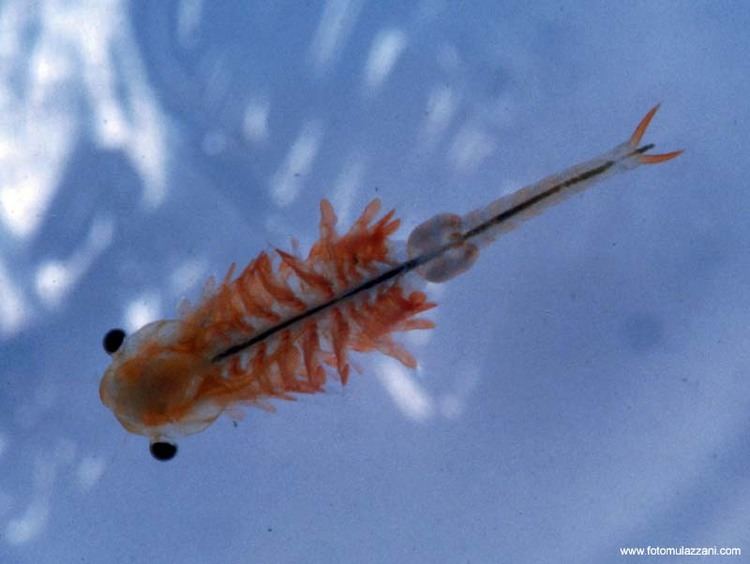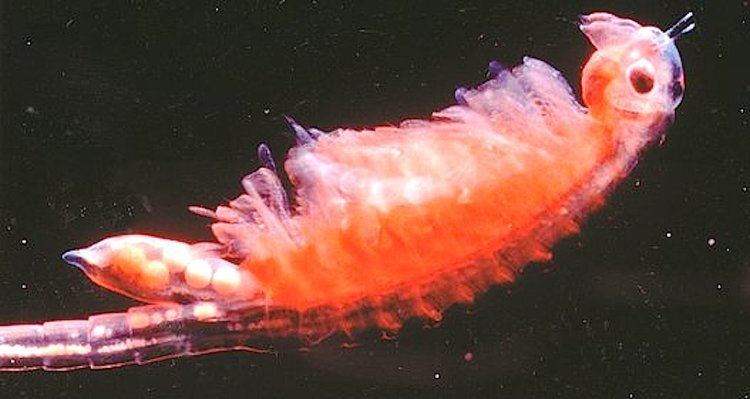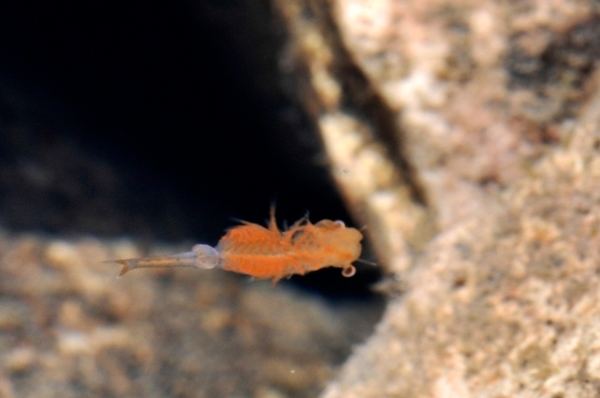Rank Species | Phylum Arthropoda | |
 | ||
Similar Chirocephalus, Chirocephalus diaphanus, Chirocephalus croaticus, Anostraca, Tanymastix stagnalis | ||
Chirocephalus marchesonii lago di pilato
Chirocephalus marchesonii is a species of fairy shrimp in the family Chirocephalidae. It is endemic to Lago di Pilato, a lake in the Province of Ascoli Piceno, Marche, Italy.
Contents
- Chirocephalus marchesonii lago di pilato
- Discovery
- Description
- Habitat and behaviour
- Preservation
- References

Discovery

The Chirocephalus marchesonii was observed for the first time in 1954 by Vittorio Marchesoni, director of the Botanical Institute of the University of Camerino, during one of his excursions in the Sibillini Mountains. New samples were studied in 1957 by Ruffo and Vesentini, who established that it was a new species of crustacean. It was called Chirocephalus marchesonii in tribute to the first discoverer Vittorio Marchesoni.
Description

The Chirocephalus marchesonii stands out easily from the others branchiopods thanks to its long body, approximately cylindric, just as the non-attendance of shell. The body, which presents an obvious metamerism, is divided in three sections, face, thorax equipped of eleven pairs of appendix/fins also having a breathing function, and the abdomen which contains the reproduction organs: an egg sac for the female, and two penises of same length for the male.

These crustaceans, which have for distinctive feature swimming on their backs, come under zooplankton. They move thanks to swinging moves of the appendixes of the rib cage. Their swimming position seems to derive from a positive phototropism.

The specie is characterized by a coral red coloring. The size is included for both sexes between 9 and 12 mm.

The eggs produced are of a spherical shape and compared to the others similar species present in Italy (C. kerkyrensis, C. salinus, C. sibyllae, C. diaphanous and C. ruffoi) result from the ones of bigger dimension with an average diameter of 0.43 mm.
The Chirocephalus marchesonii has an anamorphic development where the embryo opens as Nauplius larva and the adult shape is touched after a series of gradual modifications of the physical morphology, and the new sections and appendix are gradually added. Its biological cycle is synchronized and purely dependent on the annual hydrological cycle of the Pilate Lake and regularly recurs in a time arch included between the beginning of June and the end of September.
Habitat and behaviour
One of the principal characteristics of the anostraca consists in their adaptability to environments subjected to strong seasonal stress. The environment is often made of temporary water pockets and of little aquatic ponds characterized by a total temporary lack of water and going through extreme phases (draining/freezing) and (or) by fluctuations of the water level and as a result by strong wavering of the physic-chemical factors.
In order to face up these kinds of difficulties, the Chirocephalus produce a form of resistance called cyst, inside of which the embryo is stopped at the stage of gastrulation, is isolated by a protective partition which allows it to keep its vitality until the moment when the ideal conditions for its development recreate themselves until the hatching.
Preservation
The cysts are left season after season and do not all hatch out, a part stays in the sediment which constitutes de facto a stock and an extra guarantee for the species survival. The protection of the biotope is primordial because the life of the species under its adult form only goes for several months, whereas the cysts which are produced stay vital for many years if the anthropic factors do not disrupt the sediments where they build up.
The most important risk is particularly related to the climatic changes in progress. The ecosystem of altitude such as the Pilate Lake one is characterized by specific climatic conditions which make it particularly vulnerable to high temperatures. The Pilate Lake is considered as a relic zone which, by its climatic and orographic conditions, constitutes a real refuge housing which keeps giving the necessary conditions to the survival of every species which populate it, among them the Chirocephalus marchesonii, stenothermic species of low temperature.
If the forecasts of the Intergovernmental Panel on Climate Change reinforce, the species could disappear from now until a few decades.
